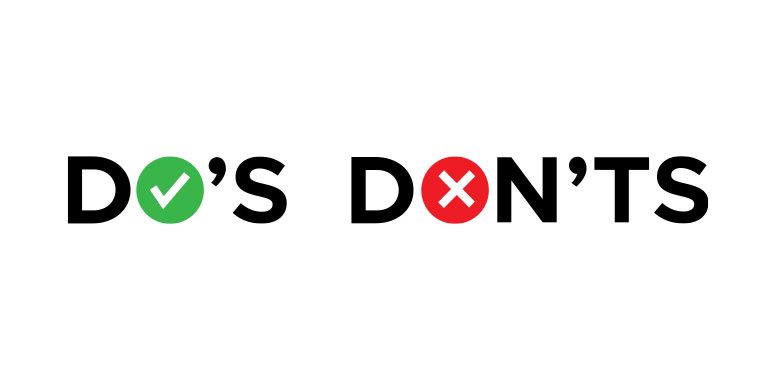How to Create Amazon Product Titles That Enhance Searchability and Drive Conversions
How to Create Amazon Product Titles That Enhance Searchability and Drive Conversions
Crafting an effective product title on Amazon is a vital step in setting your listing apart from the competition. The right use of optimized keywords and engaging language ensures that your product appears in relevant searches, capturing the attention of potential buyers. However, keyword usage must also be balanced with Amazon’s dynamic and strict guidelines to avoid penalties or reduced visibility. Achieving this balance can significantly improve your product’s ranking, making it more visible to customers and ultimately leading to more clicks and conversions. Let’s explore how to perfect your Amazon product title to maximize discoverability and boost sales performance.
Why Product Titles Matter: A Deeper Look
On Amazon, your product title is one of the most important components of your listing, and its impact goes beyond just being the name of your item. Amazon’s A10 Algorithm, which determines product rankings in search results, places an important emphasis on relevancy. The title is one of the first elements that the algorithm sees to check whether your product is a good match for a customer’s search query. If your title contains the right keywords with accurate information, your product is more likely to appear in relevant search results, and results in increased visibility of the product.
However, the use of keywords alone doesn’t guarantee success to the listing. While it’s crucial to include relevant keywords that match what your potential customers are searching for, there’s a fine line between optimization and keyword stuffing. Overloading your title with too many keywords can make it look unnatural and difficult to read, which could discourage potential buyers from clicking on your listing.
In addition to keywords, the way your title is structured is important as well. Titles that are clear, concise, and well-organized are more likely to attract attention. A properly made title gives buyers an immediate understanding of what your product offers and helps them decide whether it meets their needs. Key details like brand, product type, size, variation and unique features should be included in the title to maximize clarity and appeal.
Structuring an Effective Amazon Title
Amazon suggests using the following formula for product titles:
[Brand Name] [Color/Flavor] [Size/Quantity] [Additional Keywords].
For example, instead of a generic title like "Bluetooth Headphones," try:
Sany Bluetooth Headphones – Wireless Noise Canceling, Black, 30 Hours Playtime.
This format helps show all important details upfront, while also keeping things clean and easy to read.
Essential Guidelines for Crafting the Ideal Amazon Product Title
Creating a good product title on Amazon isn't just about following the rules—it's about making sure your title is clear, searchable, and meets Amazon's guidelines to help your product get noticed. Here’s a simple guide to help you craft the perfect product title:
Length Matters—Use the Space Smartly
Amazon lets you use up to 200 characters in your product title, so you have plenty of room to include key details. However, it’s best to keep your title between 80 and 200 characters to make it clear and easy to read.
To save space, use abbreviations like “in” for inches or “3” instead of “three.” This way, you stay within the limit without missing important info. Just make sure your abbreviations don’t confuse buyers—clarity is always more important than saving space.
Use Proper Capitalization for a Professional Look
Amazon has rules on how to capitalize titles to keep things uniform and professional. Capitalize the first letter of each important word, but leave out small words like "and," "the," "in," or "with." This makes your title easier to read and ensures it follows Amazon's guidelines, giving your listing a polished and trustworthy appearance.
Avoid Using Banned Symbols
Amazon doesn’t allow symbols like *, $, ?, or {} in product titles. If you use them, your listing could get flagged or even removed. Stick to simple, clear punctuation to keep your listing safe and easy for customers to read. Also, don’t add extra symbols that might confuse buyers or take away from the product info.
Use Descriptive and Relevant Keywords
Effective use of keywords in your product title is crucial for improving search visibility on Amazon. Generic terms like “shoes” won’t perform as well as more detailed descriptions such as “leather running shoes for men.” Specificity helps the A10 algorithm better understand what you’re selling, boosting your product’s ranking in relevant searches.
That said, be mindful of accuracy—if your product isn’t made from genuine leather, don’t claim it is. Misleading customers with false descriptions can damage your credibility, leading to negative reviews and decreased customer trust. Always aim to provide an accurate and detailed description of your product, using keywords that are not only relevant but true to the item you’re selling.
Be Mindful of Amazon Updates
Staying updated with Amazon's evolving guidelines is essential to ensure your product titles remain compliant and optimized. Amazon frequently revises its policies to improve customer experience, search algorithms, and seller regulations. By keeping track of these changes, you can adjust your product titles accordingly to meet new requirements. Failing to stay informed may result in non-compliant listings, leading to penalties like reduced visibility or, in severe cases, account suspension. Regularly reviewing Amazon's guidelines ensures that your listings stay competitive, visible, and fully aligned with the platform's standards.
What to Avoid in Product Titles
Avoid Advertising Phrases in Your Product Title
When creating product titles on Amazon, it's important to stay away from promotional terms like "best," "top-rated," or "number one." Using these phrases can come across as biased and even violates Amazon’s strict guidelines. Instead of making claims about your product, focus on providing clear, realistic and factual information. Let your product's reviews, ratings, and customer feedback do the talking. A well-optimized title combined with positive customer experiences will naturally showcase your product’s quality without the need for exaggerated or self-promotional terms.
Inaccurate Information: Why Honesty Matters in Your Product Listings
When creating your Amazon product title, it's essential that every detail is accurate and truthful. Misrepresenting your product's materials, features, or specifications can lead to disappointed customers and hurt your reputation. For example, if a product is made from synthetic materials, don’t label it as “real leather,” as this can mislead buyers and result in negative reviews, returns, and even lower ratings.
Accurate descriptions ensure that customers know exactly what they are purchasing, which leads to better satisfaction, fewer returns, and a higher likelihood of positive feedback. Inaccurate product information can also violate Amazon's policies, which could result in your listing being penalized or removed. Being upfront and truthful about what you're offering not only builds trust with customers but also helps maintain a good standing on the platform.
Restricted Words: Stay Compliant with Amazon's Guidelines
Amazon has strict rules regarding the use of certain words and phrases in product titles and descriptions. To keep your listing in good standing, it's essential to stay updated on Amazon’s list of prohibited terms. This includes offensive language, inappropriate content, and any words that imply adult themes or explicit material. Additionally, exaggerated claims like “the best,” “miracle cure,” or “guaranteed results” are also restricted, as they can mislead customers and violate Amazon's policies on accuracy.
Using these restricted words can lead to your product listing being flagged, which reduces its visibility in search results. In severe cases, repeated violations could even result in the suspension of your selling privileges. Regularly reviewing and adhering to Amazon's guidelines ensures that your listing remains compliant, visible to customers, and protected from potential penalties. Staying mindful of these restrictions will also contribute to a more professional, credible, and trustworthy presentation of your products.
Final Thoughts
Your Amazon product title is the gateway to your listing. To optimize it for both Amazon’s search engine and your potential customers, you need to strike a balance between keyword integration, readability, and compliance with Amazon’s strict guidelines. By following these best practices, your product is more likely to rank higher, attract clicks, and convert those clicks into sales.
Optimizing your Amazon product titles is crucial for boosting searchability and driving conversions, but it can be a time-consuming and detailed process. By delegating this task to our team at Chief Marketplace Officer, you can focus on growing your business without worrying about keeping up with Amazon’s ever-changing rules. Free up your time to scale your operations, expand your product lines, and enhance your brand while we ensure your Amazon listings are fully optimized to perform at their best. Let us handle the intricacies of title optimization so you can concentrate on what truly matters—expanding your business.


